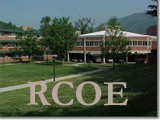Reich College of Education, Appalachian State University
Artifact # 5
Designing An Accessible Computer Lab
Competency 12.4: Physical settings that support active student involvement, inquiry, and collaboration.
Context
In my Foundations 3100 class, Classroom Use For Microcomputers, we came up with a list designed to create a lab that will be available for all students. Everyone shared his or her ideas with the class and we developed a master list. Then I word processed this list using Microsoft word.
Impact
I will have students with special needs in my class; it is my responsibility to see that all the students can use the computers. For example, I might have students in a wheelchair or students with hearing or tactile difficulties.
Alignment
Designing An Accessible Computer Lab aligns with Competency 12.4 – As a future NC public school teacher, I now know how to arrange a classroom to benefit all students.
This artifact also meets INTASC principle 5. In the time of technology, children enjoy going to the computer lab. An accessible computer lab helps to provide positive experience in the lab in allows for active engagement in learning, and self motivation to all learners. Students with physical or learning disabilities may struggle in an improperly prepared computer lab; therefore an accessible computer lab should take into consideration all students.
